When you buy through our links, we may earn an affiliate commission.
Want to play a guitar with a lower voice and scale range than your standard guitar? If you play metal, surf rock, jazz, or experimental music, why wouldn't you want to?
For this, you'll need a baritone guitar. These rare and coveted instruments have longer necks and thicker gauge strings than normal guitars, allowing them to be tuned four to five half-steps lower than standard tuning.
The subject of baritone guitars can be confusing since they're relatively off the beaten path. Fortunately, this article ranks the six best baritone guitars on the market today and will also answer all your questions about the instrument.
The PRS SE 277 Baritone Guitar knocks it out of the park for value and quality, so we gave it the number one spot. There are many other great baritone guitars to choose from as well.
Now, let's get to the rankings so you can find which of these baritone guitars is best for you!
Quick Summary of the Best Baritone Guitars
- PRS SE 277 Baritone Guitar (Best Value)
- ESP LTD Signature Ben Burley BB-600 Baritone Guitar (The Runner-Up)
- ESP LTD EC-1000 Baritone Electric Guitar (Best for Metal)
- ESP LTD Stephen Carpenter SC-607 Baritone (Best 7-String)
- Gretsch G5260 Electromatic Jet Baritone (Best for Vintage Sound)
- Ibanez ACFS380BT Acoustic-Electric Guitar (Best Baritone Acoustic Guitar)
Best Baritone Guitars
1. Best Value – PRS SE 277 Baritone Guitar
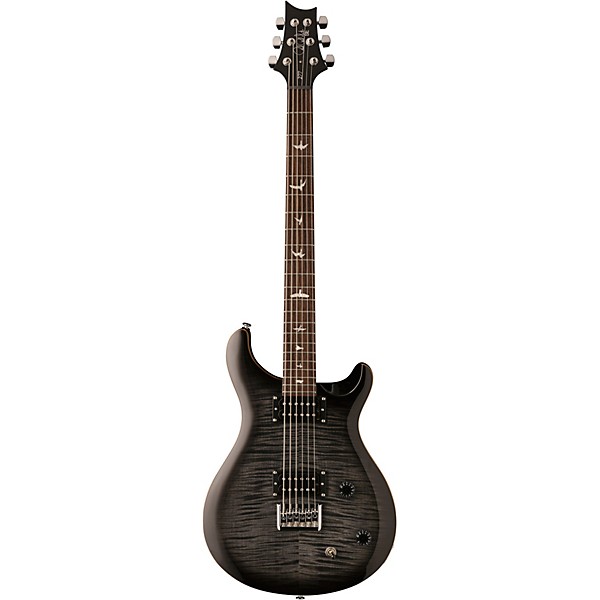
SPECS
- Body: Mahogany w/ maple top
- Pickups: SE 85/15 S Humbucking pickups
- Neck: Maple
The PRS SE 277 is a fantastic baritone guitar that takes the number one spot on our list. It is well-made, high-performing, and far cheaper than most of its competitors.
Baritone guitars are specialized and tend to come with quite a high price tag. The PRS SE 277 is a rare exception, coming in at only slightly more than similar standard scale models. But when it comes to the sound quality and playability, the guitar does not disappoint.
On the contrary, this baritone guitar exceeded all our expectations. Thanks to its rosewood fingerboard and legendary PRS craftsmanship, this guitar's playability is truly remarkable.
You can articulate riffs and chords perfectly, without any fret buzz, even on the lowest notes. This is very important for baritone guitars since those low notes are what set them apart.
The pickups are custom PRS humbuckers that maintain note clarity no matter where you play on the scale. There's even a coil split function if you want more of a single-coil sound. PRS kept it simple with only one tone knob and a volume knob, but there's still a decent amount of tone control on this beast.
And, of course, you'll find the bird-shaped inlays on the fretboard, a signature detail included in all PRS guitars. The black violin-carved body has a nice heavy look that matches its heavy sound.
Give this amazing guitar a try, and you'll see exactly why it took the gold on our rankings.
2. The Runner-Up – ESP LTD Signature Ben Burley BB-600 Baritone Guitar
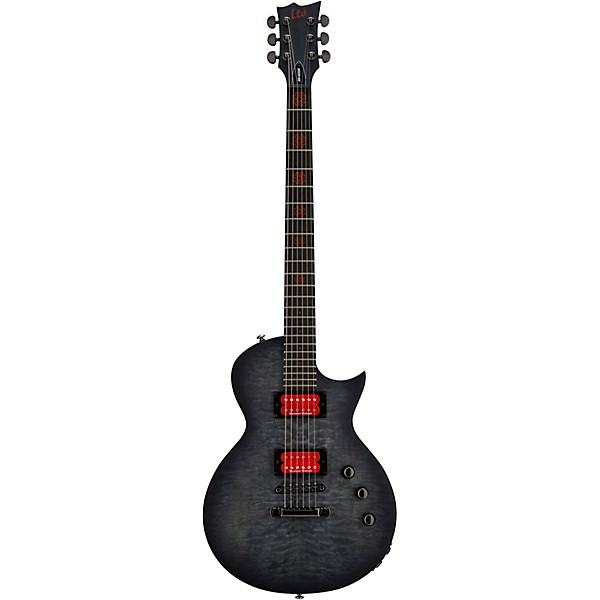
SPECS
- Body: mahogany w/ quilted maple top
- Pickups: Duncan humbuckers
- Neck: Maple
The ESP LTD Ben Burley BB-600 is another stellar baritone guitar. It comes in as the runner-up because, although it's built even better than the PRS baritone, it also comes at almost three times the price.
But for those who have the budget, this is a baritone guitar that really delivers. It was designed in part by Ben Burley of Breaking Benjamin fame, so you already know it's going to be a serviceable rock guitar.
As it turns out, the BB-600 is more than just serviceable. The craftsmanship goes above and beyond in more ways than one. A black quilted maple design was used over the mahogany body, complementing the red Seymour Duncan humbucker pickups beautifully.
There's also a piezo pickup, which isn't externally visible. This type of pickup captures the vibrations of the wood in the guitar's body rather than capturing the string's vibrations like the humbuckers do.
There are separate volume knobs for the humbuckers and the piezo pickup, as well as a rotary pickup switch knob. Something that really makes the BB-600 unique is that it has two separate output jacks so that the humbuckers and piezo can be routed to separate amps or system channels if you desire.
This means the pickups can retain their individual tonal qualities, making your overall tone sound extremely full, wide, and brimming with character.
The Breaking Benjamin logo can be found in red as inlays down the neck. This guitar evokes power and energy, especially thanks to its longer scale length and dark color scheme. It's perfect for playing the deep guitar parts you'll find all over hard rock and nu-metal records.
This is undoubtedly one of the most versatile and visually striking baritone electric guitars out there.
3. Best for Metal – ESP LTD EC-1000 Baritone Electric Guitar
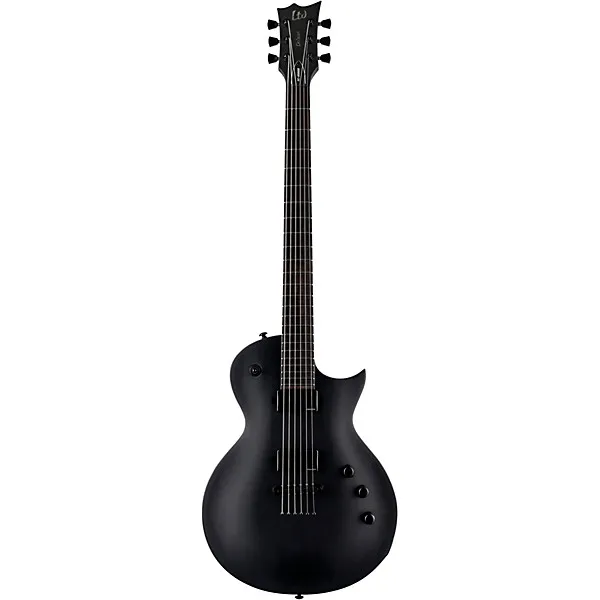
SPECS
- Body: Mahogany
- Pickups: Active Fishman Fluence Humbuckers
- Neck: Mahogany
Baritone electric guitars lend themselves to metal quite nicely. The extended scale length makes it possible to play in lower registers than standard guitars have access to, so baritones sound great with heavy music in general.
More modern approaches to metal, like djent or deathcore, use exceedingly low tunings and require either a baritone guitar or some other modified guitar, like a 7-string or 8-string, to be played correctly.
So what makes the ESP LTD EC-1000 one of the best baritone electric guitars for metal specifically? In a word, it's the pickups.
The EC-1000 has two active Fishman Fluence humbucking pickups, which are the cream of the crop when it comes to playing with distortion. These are high-gain pickups that are known for having exceptionally good noise cancellation.
This is important for metal because the more distortion you add, the more you risk having an unwanted humming sound in your signal. With these Fishman Fluence pickups, you'll hear everything you want and nothing you don't.
Notes will remain crystal clear and highly intelligible, even with heavy distortion applied. Each pickup has a separate volume knob, and you can switch between them with the three-way pickup selector switch.
There's also a tone knob in case you want to roll off some of the high end.
A thin U-shaped mahogany neck prioritizes playability, while the cutaway eclipse-style body makes even the highest frets accessible to your fingers.
If you play heavy or experimental genres, consider giving the ESP LTD EC-1000 a try. You may be blown away by the doors it opens for you!
4. Best 7-String – ESP LTD Stephen Carpenter SC-607 Baritone
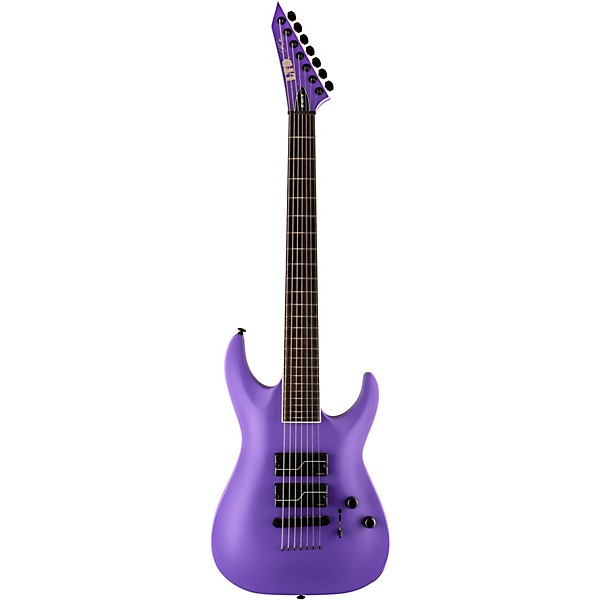
SPECS
- Body: Mahogany
- Pickups: Active Fishman Fluence Pickups
- Neck: Maple
Ah, a 7-string baritone guitar, for when you really want to play low notes.
On a normal 7-string guitar, your lowest note would be tuned to a B. A baritone guitar is designed to be tuned 4 to 5 half steps lower than a standard guitar.
Let's do the math real quick. This means the lowest note on a 7-string baritone guitar is, by default, a G or even F#. This is super low and will allow you to play some crazy heavy guitar parts (play responsibly; you might scare the neighbors).
So, if you do want to grab a 7-string baritone so you can play lower than the Marianas Trench, then the ESP LTD Stephen Carpenter SC-607 Baritone Guitar is (in our opinion) the best one you can find.
First of all, it's extremely versatile when it comes to tone. Its Fishman Fluence humbuckers are tailor-made to handle high-gain tones and cut down on unwanted feedback. You can even toggle between active and passive pickup modes, giving the guitar two entirely different tonal palettes to choose from.
Active and passive pickups each have their respective pros and cons. Many professional guitarists will swear by one or the other. Well, with the SC-607 Baritone, you don't have to choose between them. Whatever tone the situation calls for, you've got access to it.
In passive mode, the notes sound clean and fluid, especially for styles that are a bit less gritty. In active mode, however, the guitar delivers a full, boosted tone, perfect for high distortion and pick attack. With the master volume knob, tone knob, and pickup switch, you can dial in the perfect tone for your track in seconds.
Another reason to love this guitar is its impressive build quality. It's sleek, playable, and meticulously designed to preserve intonation all the way down the neck. For those looking to conquer a 7-string baritone guitar, this may be the only instrument you'll need.
5. Best for Vintage Sound – Gretsch G5260 Electromatic Jet Baritone
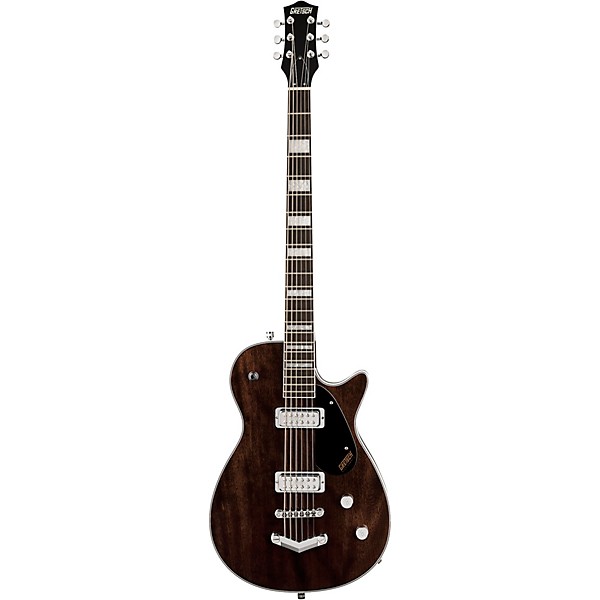
SPECS
- Body: Mahogany
- Pickups: Gretsch mini humbuckers
- Neck: Maple
We've talked a lot about using baritone guitars for metal, but the truth is there are many other genres that can benefit from this type of instrument as well. Blues, folk, and surf-rock are some of the most common.
If these vintage-style genres are more up your alley, then we'd recommend the Gretsch G5260 Electromatic Jet Baritone Guitar.
Gretsch is a highly sought-after brand when it comes to vintage-inspired instruments. They're practically synonymous with the vintage tone, and it's because they've stayed true to their rockabilly roots since the 1930s -- even before brands like Gibson became popular!
In the case of the Electromatic Jet Baritone Guitar, it delivers the classic 50s Gretsch tone and looks the part of a vintage instrument as well. The glossed mahogany body looks great with the Gretsch mini-humbuckers and long maple neck.
The Adjusto-Matic bridge with V-Stoptail gives the guitar the sustain and intonation that most players want. It's perfect for surf-rock, rockabilly, or soloing over some jazzy chords. The maple neck also sports a laurel fretboard with Neo-Classical thumbnail inlays.
There's no question that this guitar is uniquely designed, as Gretsch instruments tend to be. This is easily the best baritone guitar available for people who want a one-of-a-kind vintage-style instrument that actually delivers.
6. Best Baritone Acoustic Guitar – Ibanez ACFS380BT Acoustic-Electric Guitar
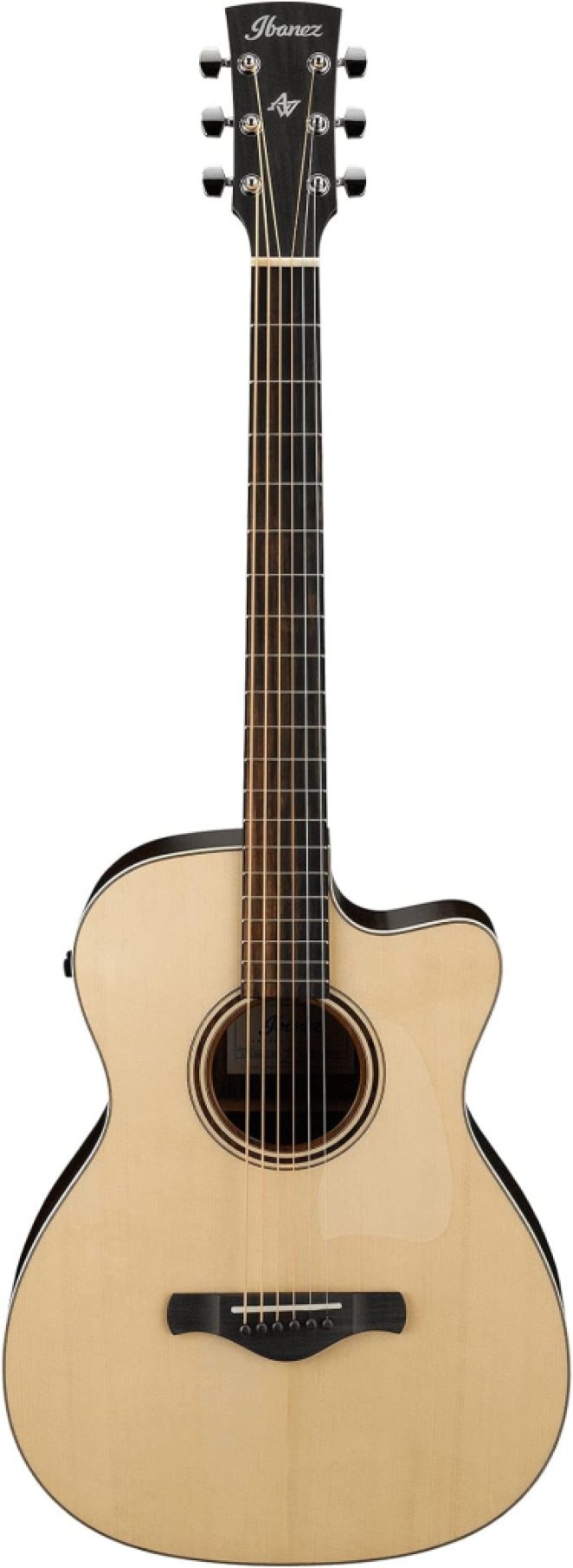
SPECS
- Solid spruce top, ferro back & sides
- Electric acoustic guitar
- Neck: Pau Ferro
Introducing a head-turning instrument from Ibanez's Artwood Fingerstyle Collection. The Ibanez ACFS380BT is an acoustic-electric baritone guitar that is capable of holding its own in many different situations.
Let's start with its acoustic sound. The body is topped with solid spruce, a wood known for creating full, rounded tones. This complements the heavier gauge strings nicely, as even the lower tones can be heard perfectly.
It also has an ebony fingerboard, which has been meticulously crafted and set up to maximize playability. Playability is important for acoustic guitars in general, but arguably even more so for baritone acoustics.
The larger space between the frets and the heavier gauge of strings could leave you more prone to unwanted fret buzz or challenges pulling off your chord shapes perfectly. But thanks to the impressive craftsmanship of the Ibanez, these are not issues at all.
It's not hard to play this guitar cleanly, so each note sounds crisp and clear. It really is a brilliant guitar.
Even more impressive is the fact that it has two pickups inside the body and a separate output jack for each pickup. Much like the Ben Burley guitar, you can route the pickups to two separate channels and blend to taste for a fully unique tone.
This guitar is a perfect choice for buskers who prefer to sing in a slightly lower register than most pop songs allow. The baritone register will set you apart from other singer-songwriters and make you stand out in the audience's minds.
This instrument is beautiful and can be played with or without amplification. With a guitar this versatile and well-made, it's no wonder we picked it as the best acoustic baritone guitar available today.
Best Baritone Guitars Buyer's Guide
With a specialized instrument category like baritone guitars, it helps to have a buyer's guide to tell you the most important features to look out for.
Whether you order a guitar online or head to your local music shop to find one, there are certain features that are always going to matter more than others. Let's look at the top things to consider when looking for the perfect baritone guitar.
Brand Reputation
Brand reputation is a very important factor for all kinds of musical instruments. When it comes to baritone guitars, it's crucial to buy from a trusted brand because these guitars are larger, heavier, and more labor-intensive to produce than most regular guitars.
That's why every guitar on this list is from big-name brands that are known for being dependable, like PRS and ESP.
Budget
Budget can be another major consideration, especially since baritone guitars tend to be on the pricier side. You can expect to pay over $1,000 for a good baritone guitar since the manufacturer needs to order specially sized parts and devote more time to the assembly process.
There are some exceptions to this, though. For example, we gave the PRS SE 277 the number one spot because it is about half the price of many of its competitors. The Squier Paranormal Baritone Cabronita Telecaster is another budget-friendly baritone you could check out.
You'll be hard-pressed to find a baritone for less than $300 or so, even if you plan to buy used. Specialty instruments just don't come cheap. If they did, they wouldn't be specialty.
That said, there are ways of sidestepping the (admittedly) high price tag on many of these guitars. Some sellers have monthly payment plans, product bundle offers, or clearance sales. There's no harm in seeing what kind of baritone guitar deals you can find.
Aesthetics
Instruments are mostly about sound, but their aesthetics should not be overlooked. It's important to like the way your guitar looks, since visual appeal is and always will be a part of music.
The Ben Burley signature guitar has the most unique aesthetics, and it's an aesthetic we happen to think is awesome. The black and red color pairing goes great with anything in the realm of rock and metal.
But for a more vintage look, you can't go wrong with Gretsch.
No matter what visual approach you take, chances are you'll know what design you like best as soon as you see it. Nothing wrong with choosing a guitar that matches your personality.
Build Quality
Build quality encompasses several different aspects of the guitar, all of which are very important. A guitar with good build quality has sturdy, premium materials, meticulous assembly, and proper setup and adjustment.
With all these things in place, your guitar will play how it's supposed to, and it will be more resilient to wear and tear.
Baritone guitars are of course larger and heavier than your standard guitars, so they could be more prone to bumping on things or getting banged up during transportation. You'll definitely want a durable baritone guitar rather than a flimsy one.
Fortunately, we only selected durable baritone guitars for this list.
Pickups
Pickups are arguably the most important electronic component of a guitar. They're responsible for converting the string's vibrations into an electric signal that the amp projects.
Different types of pickups are more suited for different genres because they largely determine the tonality of your instrument. For instance, the Fishman Fluence pickups in the ESP LTD EC-1000 lend themselves to metal because they are high output and have good noise cancellation.
Meanwhile, the Gretsch baritone guitar is a great choice for rockabilly because its pickups deliver more of a 50s-inspired tone.
Playability
Finally, good playability is extremely important for any guitar. So, what does it mean to be playable? Simply put, it means the guitar is easy to play.
If you nail a riff on a highly playable guitar and then attempt the same riff on a less playable guitar, you'll have two different results. The first riff will sound how you intend it to, while the second one could be fraught with fret buzz, unwanted ringing from the strings, and all sorts of other errors.
For a guitar to have good playability, it should have a smooth fretboard with a properly adjusted action. The best way to test a guitar's playability is to, well, play it. If you have the chance to try out the guitar before you buy it, then you'll know you're getting a guitar you like to play.
Frequency Asked Questions (FAQs)
How is a baritone guitar different from a regular guitar?
A baritone guitar is tuned lower than a standard guitar, and it has a longer neck to account for this. Each string is typically four to five half steps lower than standard-tuned strings.
Baritones also tend to have larger and heavier bodies and thicker gauge strings to achieve their deep voices.
What genres are baritone guitars best for?
When it comes to music, there are no rules. Baritone guitars can be used for any genre; they're just like regular guitars, but they play lower notes in the scale.
Classic and contemporary musicians have found success using baritone guitars in surf rock, metal, blues, jazz, country, folk, rockabilly, and singer-songwriter genres.
Do I need special gear for my baritone guitar?
Short answer: nope!
Baritone guitars tend to be compatible with the same accessories that regular guitars use. If you want to use your baritone to play in E standard so you match the rest of the band, then just put a capo on the fourth or fifth fret (depending on how your baritone is tuned).
When it comes to tuners, we recommend using a chromatic tuner rather than one that is specifically designed for E-standard tuning.
Are baritone guitars harder to play than regular guitars?
Baritone guitars sit between a standard guitar and a bass on the register, and their fret size reflects this. They usually have extra-jumbo frets and a neck that is 2-2.5in longer than a regular guitar.
None of these necessarily make them any harder to play, though. A high-quality baritone guitar will sound great even for less experienced players.
So while it can be an adjustment to switch to baritone for those who aren't used to it, we would not say that baritone guitars are any harder to play than regular guitars.
Tips for playing baritone guitar?
Our biggest tip for playing baritone is just to understand how it differs from a standard guitar. If you understand this, you can jam and collaborate with anyone, even if they have a standard guitar themselves.
When you know that a baritone is four to five half steps lower than standard tuning, it makes it easier to play chords or notes that complement the standard guitar's higher register.
Another tip would be to be mindful of the lower string tension that baritones have. You can embrace this, using string bends and bravado to enhance your expression while playing.
In Conclusion
Thank you for reading our exploration of the best baritone guitars available today.
If you find all the options out there overwhelming, you can always just go with the PRS SE 277 Baritone Guitar since you know it sounds great and knocks it out of the park in terms of value.
Whatever guitar you go with, we hope you enjoy exploring this slightly lower register and that it leads to all sorts of musical inspiration for you. You'll enjoy experimenting on an instrument that's just a bit unconventional. It's just one more way you can stand out from the crowd!
